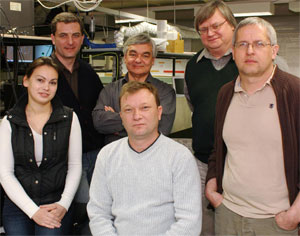| Posted: Sep 10, 2010 | |||
Progress towards 'tractor beam' - researchers move nanoparticles with laser beam |
|||
| (Nanowerk News) Researchers from The Australian National University have developed the ability to move particles over large distances, using a specially designed laser beam. | |||
| Professor Andrei Rode's team from the Laser Physics Centre at ANU have developed a laser beam that can move very small particles up to distances of a metre and a half using only the power of light. | |||
Whilst the laser beam won't work in the vacuum of space, the breakthrough has many important uses on Earth, such as the assembly of micro machines and electronic components.
Professor Rode said his team used the hollow laser beam to trap light-absorbing particles in a 'dark core'. The particles are then moved up and down the beam of light, which acts like an optical 'pipeline'. "When the small particles are trapped in this dark core very interesting things start to happen," said Dr Rode. "As gravity, air currents and random motions of air molecules around the particle push it out of centre, one side becomes illuminated by the laser whilst the other lies in darkness. "This creates a tiny thrust, known as a photophoretic force that effectively pushes the particle back into the darkened core. "In addition to the trapping effect, a portion of the energy from the beam and the resulting force pushes the particle along the hollow laser pipeline." |
|||
| Professor Rode added there are a number of practical applications for this technology. | |||
| "These include, directing and clustering nano-particles in air, the micro-manipulation of objects, sampling of atmospheric aerosols, and low contamination, non-touch handling of sampling materials. | |||
| "On top of this, the laser beam could be used for the transport of dangerous substances and microbes, in small amounts," he said. | |||
| Source: Australian National University |

